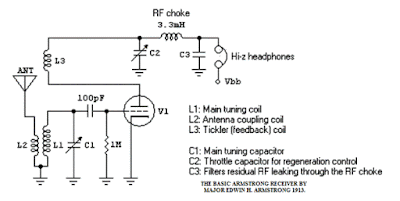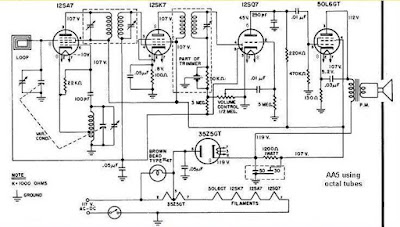A coil with a capacitor across it is called a tank and is tuned to a certain frequency. Armstrong fed the signal from such coil into the grid of a triode to amplify it. He discovered that by feeding some of the amplified signal back into the grid, regeneration occurred, making the signal even loader. His invention got a worldwide recognition and this was called the REGENERATIVE RADIO OR REGEN for short.
Regen circuit
Description. In 1913 Major Edwin H. Armstrong patented a design for the Regenarative Receiver that uses the principle of positive feed-back in amplifiers to demodulate AM, CW, SSB, and FM. Mr. Armstrong's circuit is shown and used the new vacuum tube of the time. The Regenerative receiver has since become the most popular basic receiver for Amateur Radio Operators and Electronics experimenters worldwide. The principle of operation is simple. Positive RF feedback is used to increase the RF gain of the amplifier up to and beyond self-oscillation. With no input RF signal the internal noise peaks and a small bias voltage combine to produce a stable but self-limiting oscillator, except right at the peak of oscillation very high gain is produced and the detector becomes very sensitive to small input RF signals, like those associated with SSB and CW. AM is demodulated just below the point of oscillation, but SSB and CW are demodulated when an RF signal combines with the heterodyne sign...


Comments
Post a Comment